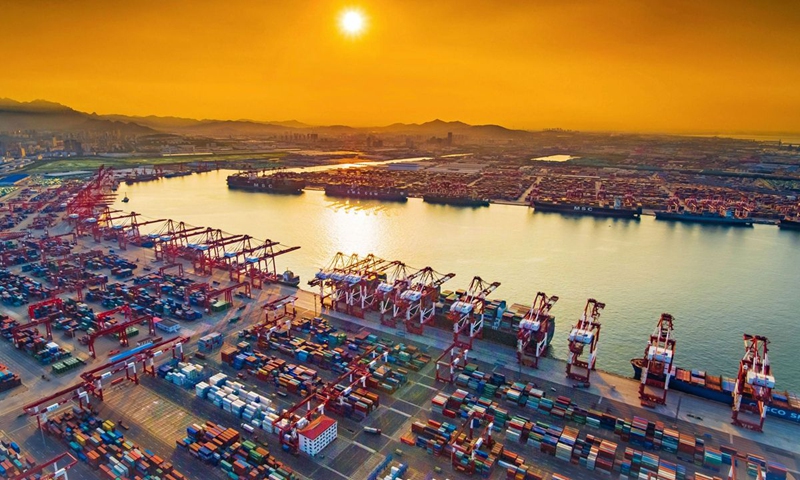
Ports in East China's Shandong Province takes stricter measures over cold-chain transportation, after two asymptomatic patients related to imported frozen seafood were discovered in Shandong's Qingdao. Photo: VCG
China's State Council, the cabinet, on Sunday issued a development plan for the cold-chain logistics sector as part of the country's 14th Five-Year-Plan (2021-25), elevating the logistics network into a pillar position in supporting economic and social development, while highlighting timely urgent issues such as imported COVID-19 risks amid the ongoing global pandemic.
The plan, which was released by the General Office of the State Council, highlighted the importance of building and strengthening an early warning system for risks related to the cold chain, as well as prevention mechanisms and emergency response capabilities, while also improving the safety assurance level of cold-chain products.
China will accelerate the construction of a national cold-chain logistics traceability supervision platform, improve supervision for the entire chain, and standardize the supervision process of real-time monitoring, according to the plan.
By strengthening the sharing of key data such as inspection and quarantine results and the sources of goods, goals such as piece-by-piece elimination, traceability and comprehensive supervision can plug loopholes in epidemic prevention and control, experts said.
Under the plan, the application of modern information technology, facilities and equipment will also be further adopted to boost cold-chain logistics.
Another highlight of the plan, in addition to the strengthening of the international competitiveness of domestic key cold-chain logistics enterprises, is to build a network of cold-chain logistics channels that better connect domestically and internationally, Qin Yuming, secretary general of the cold-chain logistics professional committee of the China Federation of Logistics and Purchasing (CFLP), told the Global Times on Sunday.
The plan makes it clear that the country will further improve the layout of overseas cold-chain logistics facilities, and promote the development of an international and domestic dual-circulation pattern, Qin noted.
By 2025, a cold-chain logistics network that connects production bases and sales markets, covers urban and rural areas, and connects domestic and international operations will be initially formed, according to the plan.
In 2020, China's cold-chain logistics market exceeded 380 billion yuan ($59.66 billion), having maintained double-digit growth for many years, according to the latest data from the Cold Chain Logistics Professional Committee of the CFLP.
But China's cold-chain logistics development is still unbalanced and inadequate.
Problems persist, such as the inadequate ability to adjust the supply of and demand for agricultural products across seasons and regions, the plan said.
There are more losses and issues of waste in food distribution, and there is still a big gap compared with developed countries - such issues are also to be addressed within the next five years, experts said.



